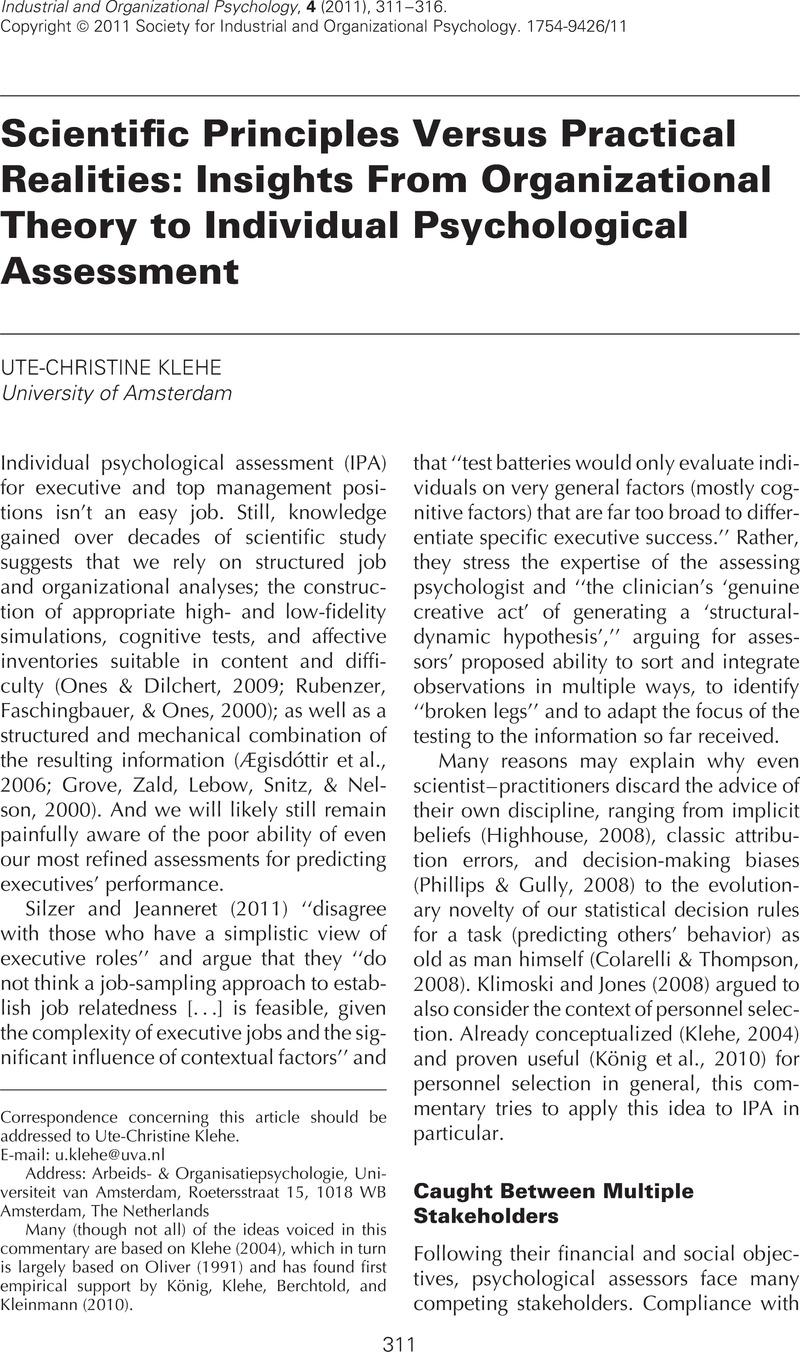Article contents
Scientific Principles Versus Practical Realities: Insights From Organizational Theory to Individual Psychological Assessment
Published online by Cambridge University Press: 07 January 2015
Abstract

- Type
- Commentaries
- Information
- Copyright
- Copyright © Society for Industrial and Organizational Psychology 2011
Footnotes
Many (though not all) of the ideas voiced in this commentary are based on Klehe (2004), which in turn is largely based on Oliver (1991) and has found first empirical support by König, Klehe, Berchtold, and Kleinmann (2010).
References
- 1
- Cited by




